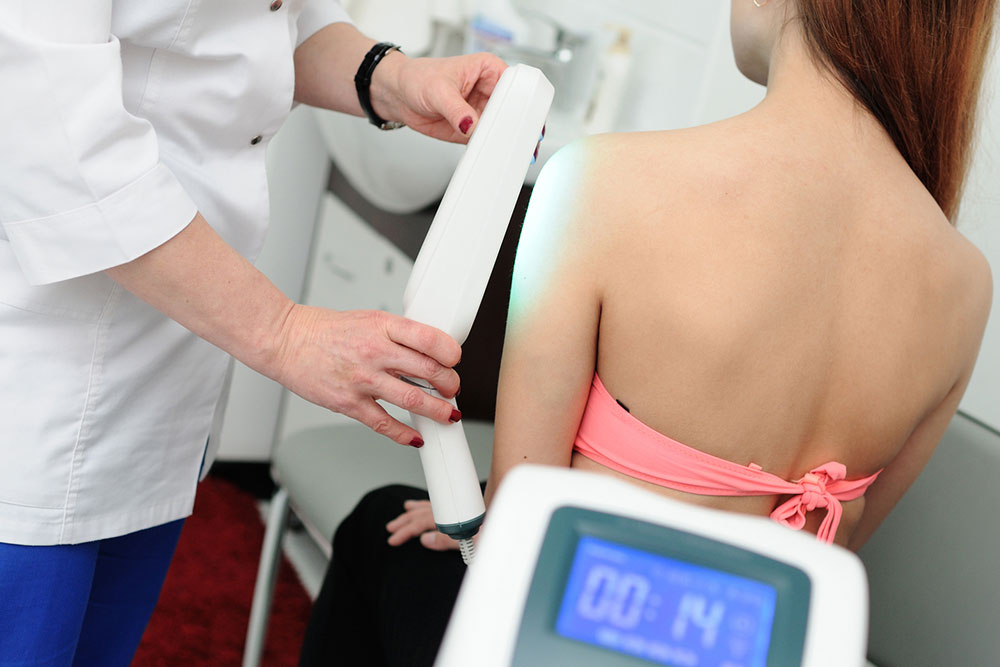
12 warning signs of psoriasis to be aware of
Psoriasis is a type of autoimmune skin disorder marked by chronic inflammation and a rapid overproduction of skin cells. This chronic condition leads to an overactive immune system, affecting the whole body. It is more common among adults, especially those aged between 40 and 59 years . There are several types of psoriasis ; the most common one is plaque psoriasis. External factors like skin injury, throat infection, or certain treatment options usually cause psoriasis.
Warning signs of psoriasis
In psoriasis, people can develop different signs and symptoms, varying from one person to another. The symptoms also depend on which type of psoriasis one has . If one experiences any of the common warning signs of psoriasis, they should seek medical help.
Plaque
Psoriasis forms thick, red patches on the skin that are often covered with silvery flakes on the skin called scales. People can notice significant and sudden changes in the way their skin looks. The raised, inflamed patches, seen mainly on the elbows, scalp, knees, and lower back, can surface anywhere on the body. Sometimes, these patches merge, creating larger patches that may be sore to tough or cause irritation. One may get a sensation of itching the affected area constantly. The appearance of plaque psoriasis can also differ based on one’s skin tone. For example, those with lighter skin pigmentation may see pink or red patches with silvery scales , while those with comparatively darker pigmentation can see purplish or brown patches with gray scales.
Issues with nails
At times, especially in nail psoriasis, one can see changes in their fingernails and toenails. Depending on the severity of the condition, one can notice white, yellow, or brown discoloration, which can look like drops of oil or blood under the nail plate, pits, or lines across the nails. One can also see light areas on the nail plate. The skin under the nails may thicken, and the nails may even be lifted from the nailbed. Further, the nails may be more susceptible to detaching or crumbling. There may be small black lines on the cuticles or spotting or reddening at the nail base. Some of these changes may be mistaken for an infection , but they might indicate psoriasis.
Joint swelling
One may experience pain or swelling in the joints , especially feet, ankles, knees, hips, and wrists. The soft tissues around joints cushion one’s bones. In psoriasis, these tissues gather fluid and lead to swelling. Swollen joints may feel stiff and painful and even change shape over time. In psoriatic arthritis, inflammation causes this swelling, making the joints feel warm to touch . One should be careful if joint pain develops as it can indicate psoriatic arthritis, which may occur due to psoriasis. At times, the joints may start paining even before the skin symptoms show up.
Fingers or toes swelling
Apart from joints, one may also notice swelling in their fingers or toes. Unlike in conditions like arthritis, psoriasis swelling tends to affect one’s entire finger or toe rather than just joints.
Lesions
In guttate psoriasis, in particular, one may notice lesions that appear and fade quickly. These are often small and round pouts and may appear on the back, arms, face, ears, or scalp. They may cause itching, but they’re less likely to hurt. One can develop these symptoms and conditions after suffering from health concerns like tonsillitis, strep throat, or skin injury. At times, stress can also trigger it.
Eye inflammation
One should get checked for psoriasis if they experience swollen or inflamed eyes or develop new or large floaters in their vision. They may also see flashing lights. Often, ignoring these warning signs of psoriasis can lead to complications like glaucoma, cataracts, or optic nerve damage.
Patches on scalp
In scalp psoriasis, patches of thick, silvery-white scales that resemble dandruff may appear on the scalp. These areas are often itchy and commonly occur on the back of the scalp but they can appear elsewhere on the head as well. In more severe cases, one may notice hair loss.
Reddish, pus-filled bumps
This is another common sign of psoriasis, where pustules or bumps may develop on the skin. These tend to join, develop rapidly, and burst open in a day or two, but some may last weeks. These pus-filled bumps may appear red and swollen, often accompanied by tenderness or pain. They may show up on the feet soles or palms.
Reduced motion
Psoriasis can lead to a reduced range of motion in some individuals due to inflammation . One may find it difficult to extend their arm, draw, type, or bend their knees. Restricted movements can often affect one’s quality of life, so early detection and management of psoriasis is important. One may experience stiffness, especially just after waking up.
Fever
Psoriatic patients may often experience chills, fever, and a general sense of being unwell when they suffer from the condition. There may be muscle weakness, a rapid pulse, or even a painful rash that does not seem to get cured by home remedies.
Rashes
Rashes are other common warning signs of psoriasis, which can often lead to patches of red, inflamed skin. The skin can crack or bleed, especially if the area is scratched.
Fatigue
In many cases, the symptoms may be accompanied by the person feeling extremely fatigued even after proper rest. This can make it difficult for one to perform simple tasks.
Those who notice these warning signs of psoriasis should immediately consult with a dermatologist or rheumatologist. The experts can perform physical examinations, check one’s medical history, perform a skin biopsy if needed, and prescribe proper treatment options to manage the condition.


